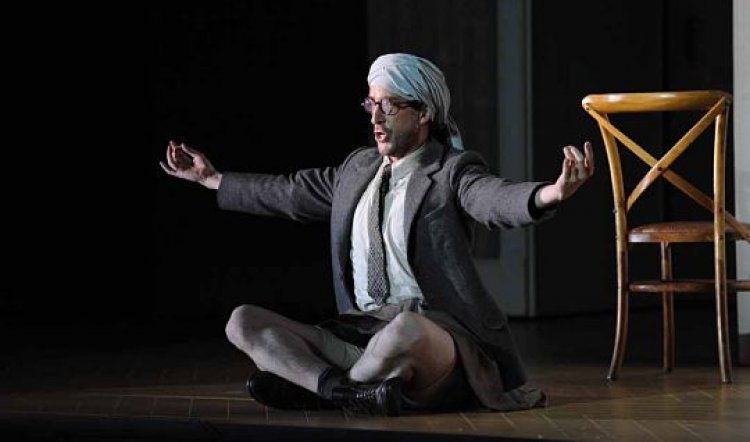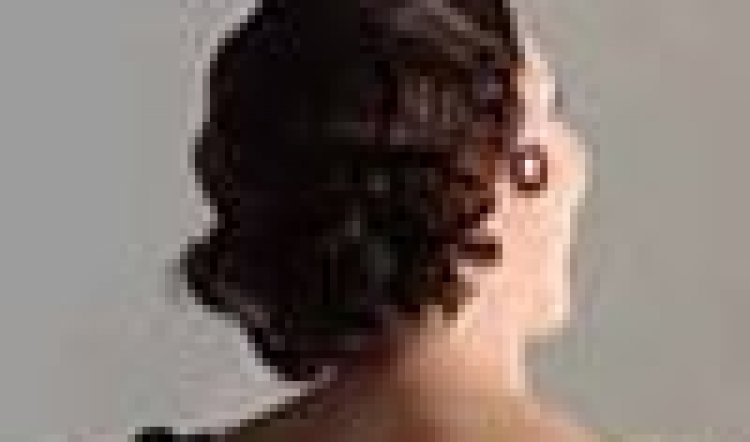
Partenope
PARTENOPE, Opera Australia at the Sydney Opera House to March 31, 2011. Photos: Branco Gaica (Kanen Breen - above)
Co-produced with English National Opera and first staged in London, this stylish Partenope won the 2009 Olivier Award for best new opera production. ENO is the contemporary home of Handel’s operas, and the rarely seen 1730 comedy is their latest – from director Christopher Alden, who gave Opera Australia a wonderful new Tosca in 2010, starring Takesha Meshe Kizart. (Although it must be said many subscribers hated it and apparently complained loudly to management.)
Partenope – which apparently means “virgin” not that it obviously relates to the plot – is a ridiculous frou-frou that makes Shakespeare’s comedies of mistaken identity, love lost and found, jealousy and unlikely happy endings seem quite staid by comparison. It’s not one of Handel’s masterpieces, but as he whipped it out in under a month and, um, borrowed the libretto from an already dodgy source, it’s not exactly surprising. Rather, it’s a frippery that gives an audience the opportunity to spend a few hours in the company of six necessarily fine and agile singers; all of whom must be able to produce vocal fireworks with ease and conviction.
Led from the front by Emma Matthews, the rest of the troupe take on the score – and vital embellishments – with assurance and charm. Sweet-voiced Kanen Breen has comic ability to spare and, as Emilio – one of the heroine’s three suitors – unselfconsciously sets about delivering every nonsensical bit of business chucked at him by director Alden. Catherine Carby is a handsome mezzo who’s a natural in the trouser role of Partenope’s two-timing lover Arsace; she and Matthews yet again make a terrific pairing.
As Arsace’s discarded betrothed and, of course, now disguised as another gentleman suitor, Rosmina aka Eurimene, Jacqueline Dark also brings comic and vocal chops galore to the ensemble; Christopher Field also hits the sweet high notes of counter-tenordom as (sigh) a suitor, Armindo. And the mellow baritone Richard Alexander completes the troupe as the luckless Ormonte. There’s a war, somewhere off-stage, and a challenge to a duel between a couple of the rivals, but the main action is emotional and vocal. And the sextet, with Christian Curnyn conducting a baroque-enhanced orchestra (harpsichord and theorbo) make for a musically delicious confection.
The production is another matter. The look of it is based on a couple of photographs by Man Ray who once observed, “To create is divine, to reproduce is human.” And that makes this production human to a fault. The twin inspirations for it are two images of the fabled Nancy Cunard, heiress, muse, political activist and poet and, through Man Ray’s lens, now one of the seminal representations of the high end of the Roaring Twenties. So far so good, after all, Alden was the man who so successfully migrated Tosca into fascist Spain. But that was an idea that was carried through to its internal logical end: every element attached to and made sense of every other element. It hasn’t happened in Partenope. The result is a mish-mash of visual signals and ideas; and characters who are left floundering without foundations or meaning.

Emma Matthews is got up as Nancy Cunard and looks svelte, stylish and sexy. The chaps, on the other hand, are swaddled in the grimmest collection of ill-fitting, badly tailored and fashionably incongruous and inappropriate suits this side of a 60s revival party. Only Cate Carby really gets away with it and that’s because she has a natural boyish swagger and innate confidence in what she’s doing. If that isn’t bad enough, it seems that the costume designer (Jon Morrell) and set designer (Andrew Lieberman) didn’t consult with one another, or the director, once they’d been given their Nancy Cunard postcards for reference. It’s the only rational reason why the costumes and set exist on different planets.
The opening scene takes place in Partenope’s palace: a white sweeping staircase, Deco doodads and unforgiving lighting. It could be the bridge of a Cunard liner of the period, but it’s un-palacelike in the extreme. The middle act takes place in what appears to be the corridor of a Soviet-era hotel in Zagreb. This is the kind of establishment where brutalist concrete sits side by side with an ornate 1890s wood-burning stove and picture frames are stacked against the walls. And, of course, up the back, a photographer (Man Ray, geddit?) develops his photos – albeit not in a darkroom.
A door off this corridor arrangement opens onto a lavatory where an awful lot of Benny Hill and Carry On-style haw haw humorous business is endured by Carby and Breen. The only thing missing is fart jokes; it’s beyond incongruous. As is Emma Matthews’ task of singing her lullaby-aria – a musical highlight – while lighting the stove, rubbing her hands (okay, it’s cold, got it) then trotting about barefoot!! before dossing down for the night, wrapped in a quilt, beside the stove. WHAT????. Quite why the queen would decide to do this in her own palace is beyond imagining. Quite why a director would require his singers to spend so much time singing to the back wall is another unanswered mystery.
The production goes for cheap laughs at the expense of performers and music. It’s as if Alden has little confidence in the music or the piece and instead is frantically throwing end-of-the-pier jokes and a grab bag of colour and movement in front of the audience to draw attention from this profound lack of faith. It seems to work, if the chuckles and guffaws of much of the audience are anything to go by. But is that enough? Is it right? Who is this production aimed at? Answers on a postcard please, addressed to Puzzled of Paddo.



